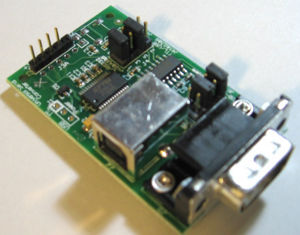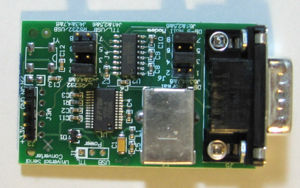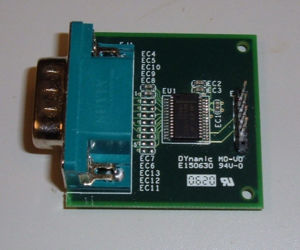Serial adapters
This page contains information about a +3.3V serial/RS-232/USB adapter that is used in low level laptop development.
Hardware
OLPC has two different serial adapters for obtaining serial output from the laptop: the original +3.3Vdc serial/RS-232 level converter that came with the ´´ATest´´ boards, and a new multi-purpose serial adapter which supports +3.3V serial to RS-232 or USB.
XO Serial Ports
The XO laptop has two serial ports provided for low level debugging. One (J1) is connected to the serial console on the main processor (Southbridge, actually). The second (CN24) is connected directly to the embedded controller on the motherboard.
XO Serial Ports - electrical infterface
The pinout of the serial connection on the laptop is: Pin 1. +3.3V is provided by the laptop on this pin, for use by the serial adapter Pin 2. TX serial data Pin 3. RX serial data Pin 4. GND return for both data and power
Pin 1 is marked on PCB with white circle near the J1 designator. Pin 4 is marked with a small number 4.
In addition, the EC serial connector (CN24) has an additional pin (5), used to provide a clock for programming the serial ROM in recovery mode. This pin expects a +3.3V compatible 65 MHz clock signal, if used. The EC serial port may be used for monitoring by connecting a laptop/serial adapter cable to the first four pins of the connector.
The Pinout of the EC serial connector is identical to that of J1 except for the extra pin 5. The 4 pin connector works fine when plugged up to the EC serial port if its justified to Pin 1.
XO Serial Ports - physical infterface
Both connectors are very close (though not quite identical) to a 1.25 pitch MOLEX picoblade. Generally the plastic connector is sold separate from the metal socket. And you assemle those by crimping a wire to the socket and then inserting it into the connector. The type of socket used requires a special crimping tool.
Though most vendors sell ready made 150mm or 300mm cables; with a socket on one and and a tinned lead on the other - which means you can pospone buying the expensive crimp tool for a bit.
Molex numbers
For the right angle Molex Pico Blade 1.24 (0.49") PCB headers (male, connector) and matching cable sockets (female).
|| | pins | board (male) | cable (female) || || J1 | 4 |53048-0410 (non SMD) | 51021-0400 || || J1 | 4 |53261-0471 (SMD) | 51021-0400 || || CN24 | 5 |53048-0510 (non SMD) | 51021-0500 || || CN24 | 5 |53261-0571 (SMD) | 51021-0500 ||
Digikey numbers
| pins | board (male) | cable (female) | J1 | 4 | WM7622CT-ND | WM1722-ND | CN24 | 5 | WM7623CT-ND | WM1723-ND |
-|} See [DigiKey page 1|http://dkc3.digikey.com/PDF/T082/P0149.pdf] and [DigiKey page 2|http://dkc3.digikey.com/PDF/T082/P0150.pdf] for more details. Depending on the wire thickness - you will need 4 or 5 sockets - which have digikey number WM1775-ND (22AW) or WM1142CT-ND (24AQ). And the Crimp tools are WM9931-ND WM9978-ND WM9932-ND or WM9933-ND. b RS-Component numbers
|


